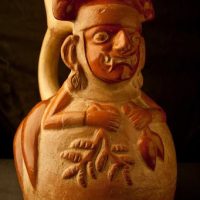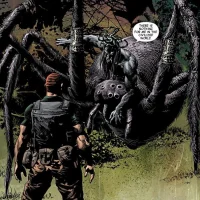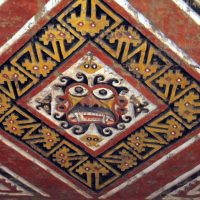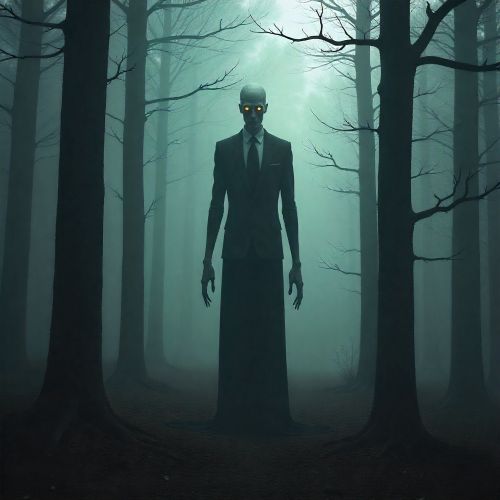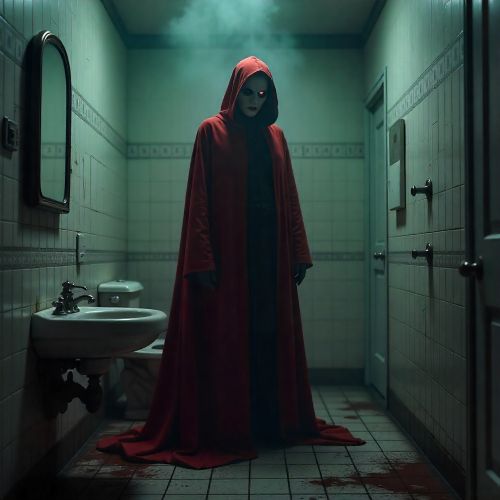Ai Apaec : The Supreme God of the Moche
Listen
At a glance
| Description | |
|---|---|
| Origin | Moche Mythology |
| Classification | Gods |
| Family Members | N/A |
| Region | Peru |
| Associated With | Creation, Warrior |
Ai Apaec
Introduction
Ai Apaec stands as one of the most formidable and influential deities of the Moche civilization, which thrived along the northern coast of Peru from around 100 to 800 CE. Revered as the supreme protector, creator, and provider, Ai Apaec played a central role in shaping the Moche worldview. His presence is deeply etched into murals, ceramics, metalwork, and architectural structures, where he appears as a deity capable of sustaining life while simultaneously wielding the destructive power needed to maintain cosmic order.
The Moche believed Ai Apaec governed essential elements such as rain, fertility, warfare, and spiritual protection. His mythology reflects a culture that saw the world as a balance of dualities—life and death, sunlight and darkness, land and sea—and Ai Apaec embodied this delicate equilibrium. As the god who received ritual offerings, including human sacrifices, Ai Apaec symbolized the ongoing negotiation between humanity and the supernatural forces controlling nature.
Physical Traits
Ai Apaec’s appearance is one of the most arresting features of Moche iconography. He is frequently shown with a snarling face marked by prominent feline fangs, which emphasize his predatory strength and his association with powerful terrestrial animals like jaguars. In many depictions, serpents emerge from his head or coil around his body, reinforcing his mastery over chthonic and subterranean forces. His body often blends human and supernatural elements, including spider-like limbs or tentacles associated with sea creatures, hinting at his influence across multiple realms.
A jaguar-head crown and bird plumes frequently appear in his imagery, symbolizing his command over the heavens and his connection to solar power. He is also shown wearing a serpent belt, ear ornaments, and elaborate regalia expressing divine authority. In ritual scenes found on Moche ceramics, Ai Apaec sometimes holds a ceremonial knife and a severed human head—imagery that underscores his association with sacrifice, warfare, and the maintenance of cosmic balance.
Family
While Moche mythology does not provide a detailed family tree for Ai Apaec, he is universally acknowledged as a primordial ancestor and life-giver. Artistic narratives suggest he shared a symbolic union with Pachamama, the Earth Mother, whose fertility was essential for agricultural prosperity. Through this mythic connection, Ai Apaec is portrayed as the force that fertilizes and energizes the earth, ensuring crops grow and communities thrive.
His lineage is also represented symbolically rather than biologically: solar imagery reflects his masculine authority derived from the upper world, while serpentine and aquatic elements link him to feminine and earthly energies. In this way, Ai Apaec’s “family” is expressed through the natural world itself, embodying the dual principles that sustain life.
Other names
Ai Apaec is known by several epithets across academic and colonial accounts. Variants such as Aiapæc appear in transcriptions based on Muchik linguistic roots, where his name is interpreted as “maker” or “doer.” His most famous title is The Decapitator, derived from consistent depictions of him holding severed heads, a reference to the ritual sacrifices believed to nourish him and protect the Moche state.
Other descriptors include Wrinkled Face, inspired by his aged, supernatural visage, Snake-Belted God, based on his iconic serpent-adorned attire, and animal-based titles such as Crabman, Spider God, or Octopus God, which reflect his hybrid and shapeshifting aspects. These varied names illustrate his fluidity across realms and his ability to assume different forms depending on the context of the myth or ritual.
Powers and Abilities
Ai Apaec’s powers encompass creation, destruction, and control over essential natural phenomena. As the creator of the Moche people, he was believed to shape the world and provide the water and fertility that sustained coastal communities. He presided over rain cycles, mountain springs, and agricultural success, making him indispensable to a society that relied on irrigation for survival.
His authority in warfare made him a patron of soldiers, who invoked his ferocity before battle. The severed heads in his iconography symbolize his dominion over life and death, as human sacrifices were offered to him to maintain cosmic order and appease the spiritual forces governing the universe.
Ai Apaec’s hybrid form also suggests mastery over multiple realms—earth, sea, and underworld—allowing him to traverse boundaries inaccessible to mortals. This ability echoes Moche shamanic beliefs, where spiritual intermediaries journeyed between dimensions. While modern reinterpretations, such as Marvel Comics, depict Ai Apaec with spider-like abilities, venom, and enhanced physical strength, the original Moche deity’s real power lay in his cosmic significance and ritual authority.
Modern Day Influence
Though the Moche civilization declined long before European arrival, Ai Apaec’s influence remains vibrant in archaeology, anthropology, and modern culture. Excavations at sites like Huaca de la Luna and Sipán have uncovered vivid murals and artifacts that prominently feature the deity, offering profound insight into Moche spirituality and societal structure. Museums such as Museo Larco frequently display Ai Apaec-inspired ceramics and iconography, ensuring his legacy remains accessible to the public.
Ai Apaec’s ferocious imagery has also found a place in contemporary art, jewelry, graphic design, and even pop culture. His reimagining in comic books and digital media, though creatively stylized, demonstrates the enduring fascination with his mythos. Academic discussions continue to highlight Ai Apaec’s role in ritual practices, identity formation, and the political symbolism of ancient Andean cultures, cementing him as one of the most recognizable and influential pre-Columbian deities.
Related Images
Source
Cold Mystery. (2025, October). Ai Apaec: The fierce deity of the Moche civilization. Retrieved from https://www.coldmystery.com/2025/10/ai-apaec-fierce-deity-of-moche.html
Wikipedia contributors. (2025). Aiapæc. In Wikipedia. Retrieved from https://en.wikipedia.org/wiki/Aiap%C3%A6c
Museo Larco. (n.d.). Ai Apaec — The heroic ancestor of the Moche. Google Arts & Culture. Retrieved from https://artsandculture.google.com/story/bQVRQW92lBYA8A
Donnan, C. B., & McClelland, D. (1999). Moche fineline painting: Its evolution and its artists. UCLA Fowler Museum of Cultural History.
Quilter, J. (2011). The Moche of ancient Peru: Media and messages. Peabody Museum Press.
Bawden, G. (1996). The Moche. Blackwell Publishers.
Castillo, L. J. (2010). The ideology of warfare: Iconography, symbolism, and ritual in Moche art. In R. J. Chacon & R. G. Mendoza (Eds.), The archaeology of violence (pp. 67–84). SUNY Press.
Pillsbury, J. (Ed.). (2001). Moche art and archaeology in ancient Peru. Yale University Press.
Frequently Asked Questions
Who is Ai Apaec in Moche mythology?
Ai Apaec is the supreme creator and protector god of the Moche civilization, associated with fertility, warfare, sacrifice, and natural forces.
Why is Ai Apaec called the Decapitator?
He earned this epithet because Moche art frequently depicts him holding a ceremonial knife and a severed head, symbolizing ritual sacrifice.
What did Ai Apaec look like?
He is often shown with fanged, feline features, serpentine hair, and hybrid elements resembling spiders, crabs, or sea creatures.
What role did Ai Apaec play in Moche religion?
He governed rain, agriculture, warfare, and cosmic order, receiving human sacrifices as offerings to maintain balance.
Is Ai Apaec worshipped today?
While not worshipped, he remains a prominent cultural and archaeological symbol of ancient Peru and is widely featured in museums and media.




